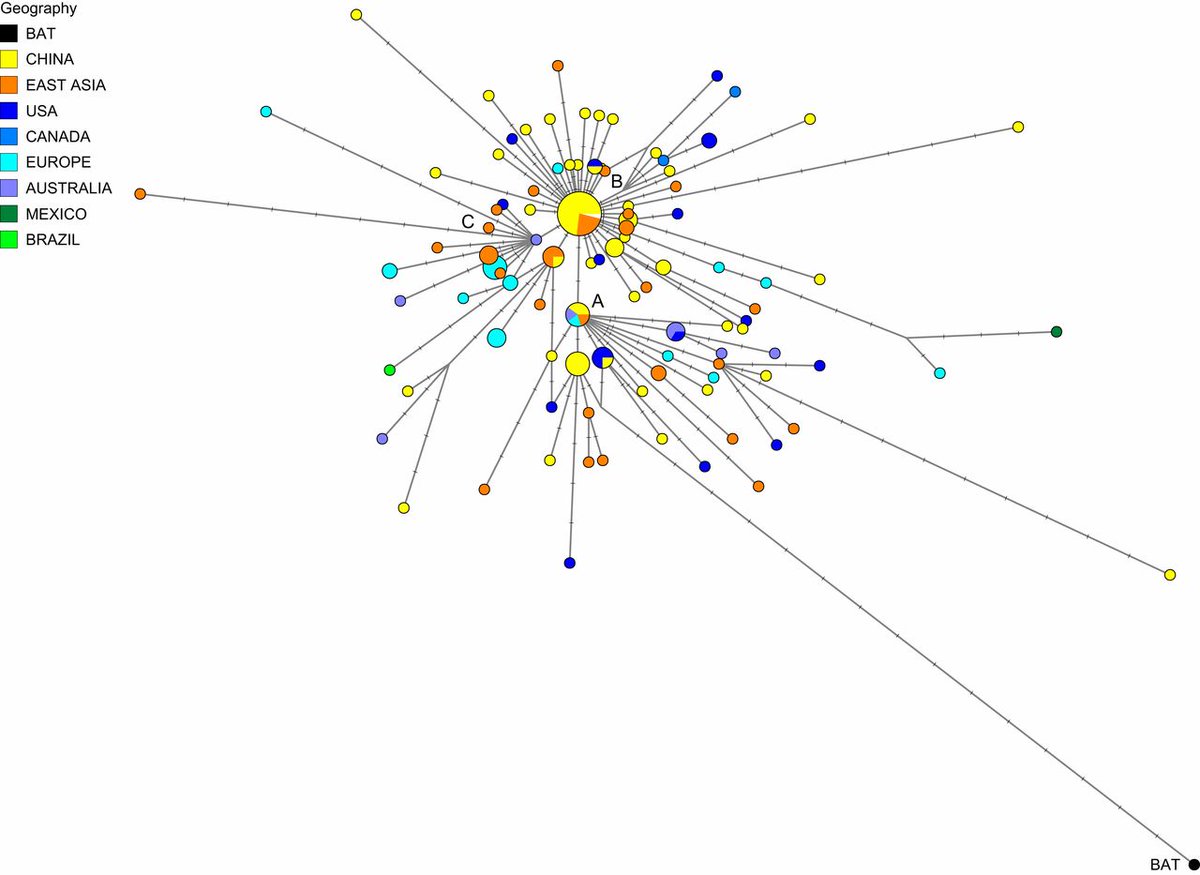
The new Lancet letter by Daszak and Co can only be read as an apology.
The title "We apologize: Science, not speculation, is essential to determine how SARS-CoV-2 reached humans" was probably too long and had to be shortened, but the intent is clear. thelancet.com/journals/lance…
The title "We apologize: Science, not speculation, is essential to determine how SARS-CoV-2 reached humans" was probably too long and had to be shortened, but the intent is clear. thelancet.com/journals/lance…
Sadly, it starts with two lies. "On Feb 19, 2020, we, a group of physicians, veterinarians, epidemiologists, virologists, biologists, ecologists, and public health experts from around the world, joined together to express solidarity with our professional colleagues in China."
First, the group that "joined together"in Feb contained three more people: Peter Palese, Bernard Roizman, William Karesh. Their abesnce is not addressed, but given the outspoken retractions issued by the first two, we might have some suspicions. nytimes.com/2021/06/25/opi…
Second, the intent of the letter was not to "express solidarity with our professional colleagues in China". The thrust of that letter was the following statement: "We stand together to strongly condemn conspiracy theories suggesting that COVID-19 does not have a natural origin."
As such, it is puzzling that when they do discuss the original letter, the only thing they reaffirm is the solidarity that nobody asked about: "The answer is clear: we reaffirm our expression of solidarity with those in China who confronted the outbreak..."
It gets better though: "The second intent of our original Correspondence was to express our working view that SARS-CoV-2 most likely originated in nature and not in a laboratory". It's worth wondering why an expression of solidarity had to be paired with a "working view".
In that paragraph, they chide themselves for getting ahead of the scientific method: "Opinions, however, are neither data nor conclusions. Evidence obtained using the scientific method must inform our understanding and be the basis for interpretation of the available information"
"We believe the strongest clue from new, credible, and peer-reviewed evidence in the scientific literature is that the virus evolved in nature". This is the only new claim, but clearly this whole letter could not have been a way to do a literature review.
If it was, leaving out the many "new, credible, and peer-reviewed evidence in the scientific literature" should have gotten this paper thrown out in said peer review. In addition, contradictory statements from the first signatory, as well as one other, deepen public confusion.
Charles Calisher, first signatory in this letter, told ABC that "there is too much coincidence" and "it is more likely that it came out of a lab". Which is it? 

Stanley Perlman told the Washington Post that “On both sides, there’s really a lack of information. That’s why we have such extensive discussions and, in some cases, vituperative discussions. There’s really no data. It’s really just opinions.” Which is it?
"Allegations and conjecture are of no help, as they do not facilitate access to information and objective assessment of the pathway from a bat virus to a human pathogen that might help to prevent a future pandemic." - This is clearly self-criticism for publishing a "working view"
"It is time to turn down the heat of the rhetoric and turn up the light of scientific inquiry if we are to be better prepared to stem the next pandemic" - Further self-cricitism of the incendiary views several authors of this letter have published. theguardian.com/commentisfree/…
Sadly, this is out of place in an apology: "Having robust surveillance and detection systems in place across the globe is essential to detect and report new or evolving pathogens". Three signatories are in the leadership team of such a "detection system" globalviromeproject.org/leadership-team
Daszak, Carroll, and Mazet are half the leadership team of the Global Virome Project, a 10-year, $1.2B USD plan to map global viruses. The conflict of interest could not be clearer, and they should have refrained from ads for their own interests here. spglobal.com/marketintellig…
Finally, we get to the statement of conflicts. It is a shameful piece of text that is clearly not intended to be read. This is not how honorable people write. Here's what it looks like: 

It may be that among the noise there are falsehoods, as well as omissions of actual conflicts. It states that "Neither PD nor EcoHealth Alliance have received funding from the People’s Republic of China.". Either that is false, or this is:
https://twitter.com/nataliegwinters/status/1401906335747395586
In addition, it does not mention that 1 in every 4 signatories is affiliated with EcoHealth Alliance, which admits to having funded implicated work at Wuhan Institute of Virology:
Rita Colwell, Peter Daszak, Hume Field, James M Hughes, John S Mackenzie, Juan Lubroth.
Rita Colwell, Peter Daszak, Hume Field, James M Hughes, John S Mackenzie, Juan Lubroth.
Further, it does not highlight the many other conflicts, including a cluster of non-independent signatories deeply tied to the Wellcome trust. It does highlight some of the deep ties to China and WIV, which should be concerning even if declared.
https://twitter.com/alexandrosM/status/1401813071635501056
Interestingly, the editor of the Lancet, Richard Horton, has interestingly gone back on his own statement, when he rejected a pro-lab-leak statement of experts, that they "had decided to let this go". It seems the statement holds for some but not others.
https://twitter.com/alexandrosM/status/1402398058193715201
In any case, other than highlighting for the whole world how a small cabal of deeply conflicted experts pretended that scientific consensus had been reached in 25 days, it is unclear what they point of this statement is, unless to muddle the waters further. It's too late.
• • •
Missing some Tweet in this thread? You can try to
force a refresh






